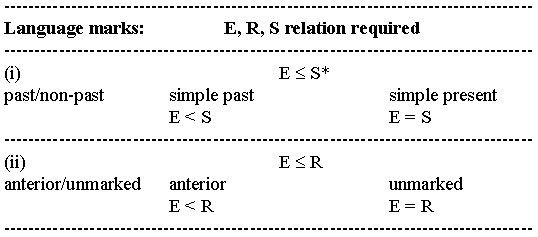
Donnerstag, 11.30 Uhr
The terms 'finite' and 'tensed' are often used interchangeably to describe a clause. This is understandable in, e.g., English where tense and finiteness are a portmanteau morpheme. But languages that do not mark tense in the verb phrase require an independent definition of finiteness. One such language is Bislama (Melanesia). I present a syntactic analysis of the complex predicates found in Bislama which accounts for anomalies in the agreement morphology found in serial verb constructions (SVCs). It also provides a definition of finiteness independent of tense which has cross-linguistic potential. Assuming fairly direct mapping between the temporal relations and morphosyntactic structure of a clause, the degraded inflection found on the second verb in SVCs can be explained by its non-finiteness. This analysis explains why serials can only have a single event reading. Because the second verb in an SVC lacks its own temporal reference point, the event must be interpreted as contemporaneous with the first. This analysis also distinguishes the structure of SVCs from restructuring verbs ('want', 'try' and 'start') in Bislama. SVCs are analyzed as a finite verb with a non-finite complement, while restructuring verbs combine with their complement to form a single finite clause.
The problematic subject-verb agreement patterns are illustrated in (1). The second verb in an SVC never appears with the full range of S-V agreement. The default i occurs, regardless of the person/number of the interpretive subject of the lower verb.

Working within Reichenbach's framework for describing tense, I suggest that a clause is finite when it is fully specified for an event (E) and a reference (R) point. This definition would hold both for languages that mark past/non-past and those that mark anteriority, as shown in Table 1

Table 1: Temporal relation that must be specified for a clause to be finite (*this relation derived transitively from [E,R] and [R,S] relations).
I propose that in the lower clause of Bislama SVCs, R is underspecified (and must be derived from the higher clause), i.e. the clause is non-finite. I suggest that if R is underspecified, the lower verb is blocked from raising out of the head of the VP. The structure required for full S-V inflection is not created; hence default agreement surfaces. The link between the higher R point and the lower verb also accounts for the simultaneous event interpretation. Restructuring verbs in Bislama have only a single specification for each of E, R and S, and never show S-V agreement on the lower verb. Their semantics require that they be treated as a single syntactic unit.
zum Programm der AG 7
zur alphabetischen ‹bersicht der Abstracts
zur zeitlichen ‹bersicht